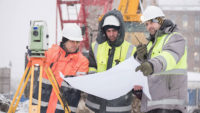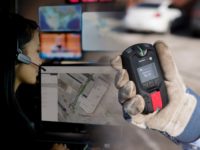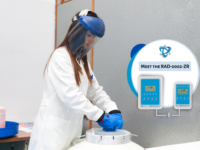Don’t let safety slip through the cracks
Leak detection and repair crucial maintenance practices

Bilanol / iStock / Getty Images Plus
Accidental leaks in the oil and gas industry can cause untold damage to wildlife, local communities, and the environment. In 2005, for example, 15 Texas refinery workers were killed – and many more injured – when a vapor cloud of natural gas and petroleum violently exploded during the restarting of a hydrocarbon isomerization unit. Although this event gained significant media attention, leaks don’t need to be of a news-worthy scale to pose a risk to staff, the public or the environment. A large number of small, seemingly benign, leaks can very quickly add up to a sizable volume of hazardous emissions.
Industrial regulation
Unintended leaks of gases and vapors from pressurized industrial equipment are known as “fugitive emissions,” and can be caused by wide range of factors, from simple gasket failures to expansion and contraction of components to improper maintenance practices. In the oil and gas sector, methane emissions from refineries are a particular concern, as they can not only damage the environment, but also threaten the safety of workers and the local community.
Fortunately, the US government is acutely aware of this fact, and the industry is overseen by a host of regulatory bodies – such as the Environmental Protection Agency (EPA) and the Federal Energy Regulatory Commission – which are enforcing increasingly stringent fugitive emission guidelines. The EPA first introduced in its Clean Air Act in 1970 to protect the public and the environment from volatile organic compounds (VOCs) and, in 1983, it mandated compulsory leak detection and repair (LDAR) programs throughout the industry. These regulations have been continuously updated since, with the agency introducing the New Source Performance Standards, the National Emission Standards for Hazardous Air Pollutants, and the Resource Conservation and Recovery Act, all of which involve the application of LDAR to monitor and reduce hazardous gas emissions.
What are LDAR programs?
The EPA defines an LDAR program as a work practice designed to identify and overhaul leaking equipment in order to reduce fugitive emissions. Any component subject to LDAR requirements must be monitored at specified, regular intervals to determine whether it is leaking and, if faulty, must be repaired or replaced within a specified time frame. Facilities are required to develop rigorous monitoring programs and record the results, which are then audited by the EPA and local regulatory agencies.
LDAR must firstly be implemented inside the refinery to protect staff from breathing in tissue-damaging VOCs, and to minimize the potential for deadly explosions. Secondly, fence-line monitoring solutions must installed at the site perimeter to determine the concentration of specific compounds in the ambient air, allowing the tracking of hazardous emissions heading towards neighboring communities. Finally, LDAR is mandatory across the roughly 250,000 thousand miles of oil and gas pipelines in the US, in order to safeguard the local environment and wildlife. There are also significant financial incentives for corporations implementing LDAR programs, since the plugging of leaks will not only minimize waste and boost profits, but result in fewer non-compliance fines.
How is LDAR carried out?
The industry standard practice for detecting fugitive methane emissions is to use flame ionization detectors (FID), which use the ions formed during the combustion of a sample gas stream to determine the concentration of organic species. The measurement process – as defined in the EPA’s Method 21 guidelines – requires the detector to be slowly moved around the periphery of the feature in question, such as the interface between two flanges, while observing the readout.
If an emission is detected that breaches the specified leak definition value, then the results must be reported, and the component repaired or replaced. How the data is handled is entirely up to the company but, since a refinery can typically contain hundreds of thousands – if not millions – of potential leak sources, it can often be beneficial to use dedicated LDAR software packages to track and report the results. This treasure trove of data can also be used to predict potential leaks before they occur, and automatically schedule preventative maintenance activities.
With LDAR, everyone is a winner
US clean air guidelines have become ever more stringent since they were first introduced half a century ago, and are constantly being updated to enforce the implementation of the latest and more sensitive emission detection technologies. As well as contributing to a healthier planet, regular leak detection and repair safeguards refinery workers by keeping tissue-damaging VOC emissions down to a minimum in enclosed areas. Once the cost savings for corporations are factored in, it becomes clear that everyone benefits from the implementation of emission reduction measures. Hopefully, as more refineries adopt state-of-the-art LDAR technologies and strict monitoring programs, catastrophic accidents such as the 2005 Texas explosion will soon become a thing of the past.
Looking for a reprint of this article?
From high-res PDFs to custom plaques, order your copy today!






